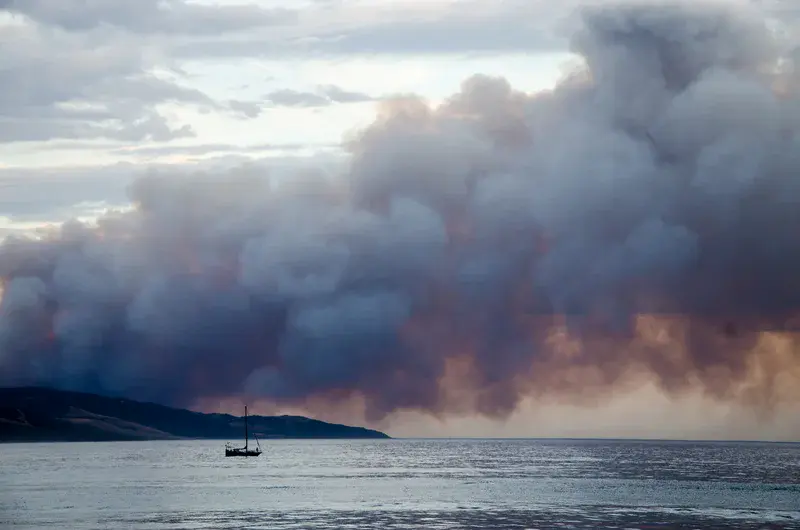
The many sides of Australia's bushfires
Bushfires in Australia are frequent in the hot and dry months characteristic of its climate. Their severity and seasonality is affected by climate change, and they impact extensive areas every year.
At first sight, they might look harmful and dangerous, since they can cause property damage and loss of human life. However, the natural ecosystem has developed different strategies to either resist or promote bushfires. In order to survive, plants have evolved seeds and shoots able to sprout after a fire, while eucalyptus trees promote bushfires with the flammable oils contained in their leaves, as a way to eliminate competition. Hence, vegetation and fire events are essentially interwoven.
The picture shows the smoke rising from a devastating wildfire (that developed last year on Christmas day along the Great Ocean Road) mixing with light at sunset, as seen from the nearby Apollo Bay. More than 2000 hectares were blazed by the bushfire, while citizens and tourists were evacuated.
Categories
- Climate: Past, Present & Future (742)
- European Geosciences Union (351)
- Natural Hazards (526)
- People (319)
Location
- Oceania (238)
- Australia and New Zealand (224)
- Australia (96)
- Exact location (143.6700 E, -38.7500 S)
Colours
Image properties
4928 × 3264 px;
image/tiff; 92.1 MB
Camera:
Nikon D5100
Taken on 25
December
2015
Submitted on 26 February 2016
Licence
Creative Commons Attribution-NoDerivs 3.0 Unported (CC BY-ND 3.0)
Credit
Beniamino Abis (distributed via imaggeo.egu.eu)
Share
Appreciate
Report